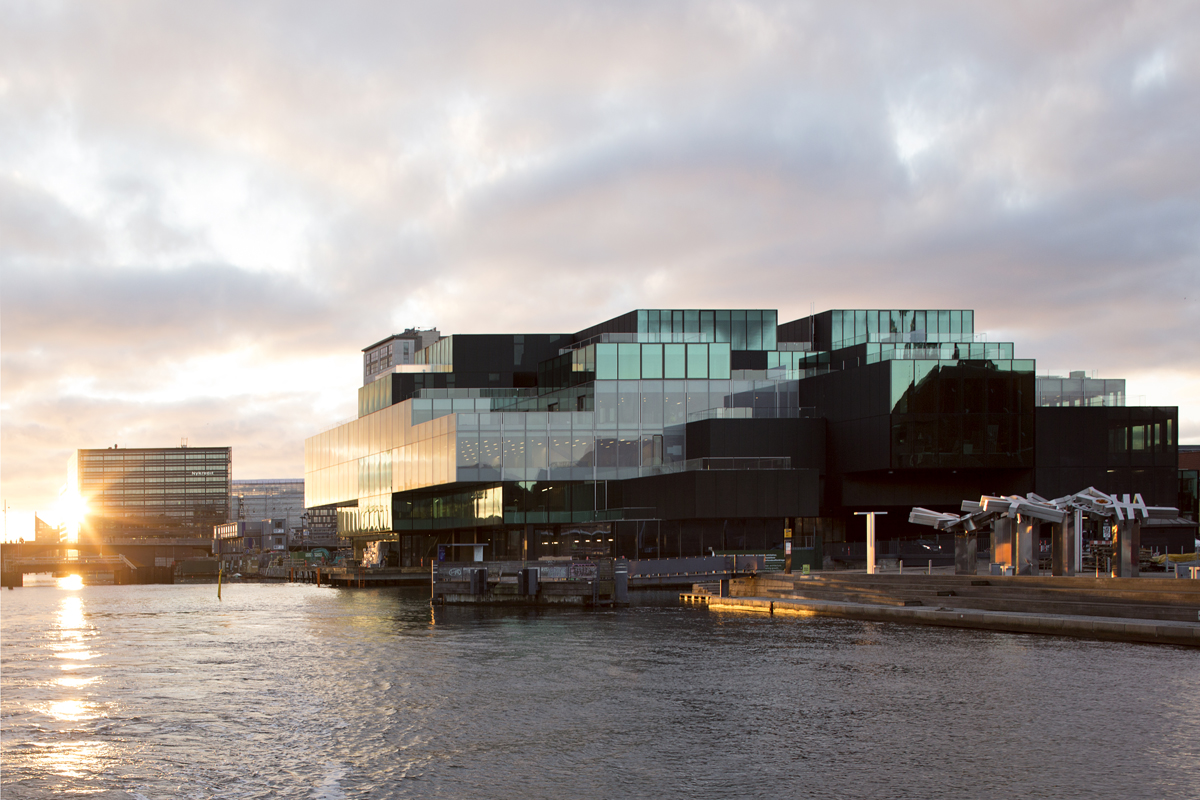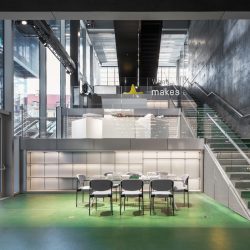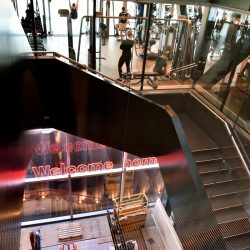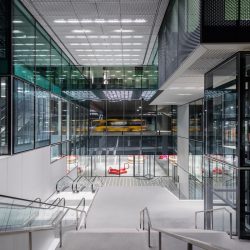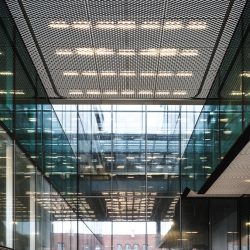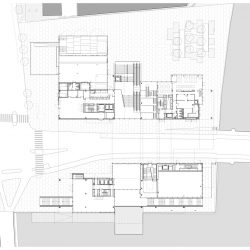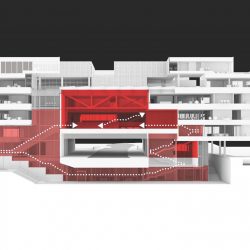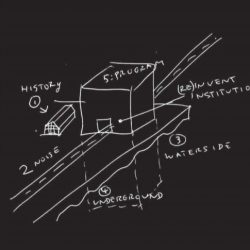OMA’S BLOX HAS MARKED COPENHAGEN AS A NEW DESTINATION FOR ARCHITECTURE, DESIGN AND URBAN CULTURE
With its location situated near natural water resources, Denmark’s capital city of Copenhagen houses a great number of urban waterfront areas. Land development projects have been an integral part of the city’s development plan, particularly the expansion of public spaces and activity grounds to encourage people to engage in waterside activities. BLOX is one of such projects initiated to serve as a landmark and act as the city’s new activity hub.
Located on Copenhagen’s harbor front land that houses an old town district and is neighbored by a great number of important buildings including Denmark National Museum, Denmark National Library, the Palace, art galleries, museums and several other government buildings, this particular piece of land that BLOX stands on was originally home to an old brewery that burned down during a fire in the 1960s. The construction of a promenade separates the land into two sections, consequentially limiting the land’s potential as a part of the land is disconnected from the harbor. The new waterside land development was initiated with OMA, a world-renowned architecture firm from the Netherlands, being responsible for the design of the project.

Designed as a large-scale mixed-use building, BLOX’s 28,000-square-meter functional space accommodates exhibition spaces, co-working space, restaurants, bistros, bookstores, fitness center, housing and parking lot. It is also the new home of Danish Architecture Center (DAC), a knowledge center and federal agency of Danish architects. BLOX was not only created to serve as the city’snew activity center, but this land development project was also designed to have optimized functional efficiency. The design team placed great emphasis on the facilitation of the riverfront area and its disconnected land. The massive structure towers over both sides of the promenade, causing the road to cut through the architectural program. The good thing about the design is it grants the crowd from the nearby government buildings and neighborhood access to the city’s harbor front with the architectural structure serving as an interface of a series of functional spaces at both the ground and underground levels.
The functional space is divided into 8 floors—6 stories above and 2 stories below the ground level. The office spaces, exhibition spaces and other functional programs are located on the 1st-4th floors and the first underground level. The second underground level is where the automatic car park is located with the 5th and 6th floors housing 22 apartment units. The outdoor area was designed into a large public space hosting physical connectivity with the interior space of the building. The architect chose to materialize the building’s exterior shell to be consistent with the interior functional space. From the outside, the structure bears resemblance to a series of superimposed boxes, and created are the diversely overlapping dimensions of the rhythmic mass. Every element is told through a simple and straightforward architectural language where linear and right angles are utilized as key elements along with the use of materials such as concrete, steel and glass. In addition, the architecture team placed a great deal of importance on the building’s efficient energy consumption and minimization of its carbon footprint through the use of environmentally standardized materials such as heat protection glass walls and the incorporation of natural light to lessen the use of electricity.
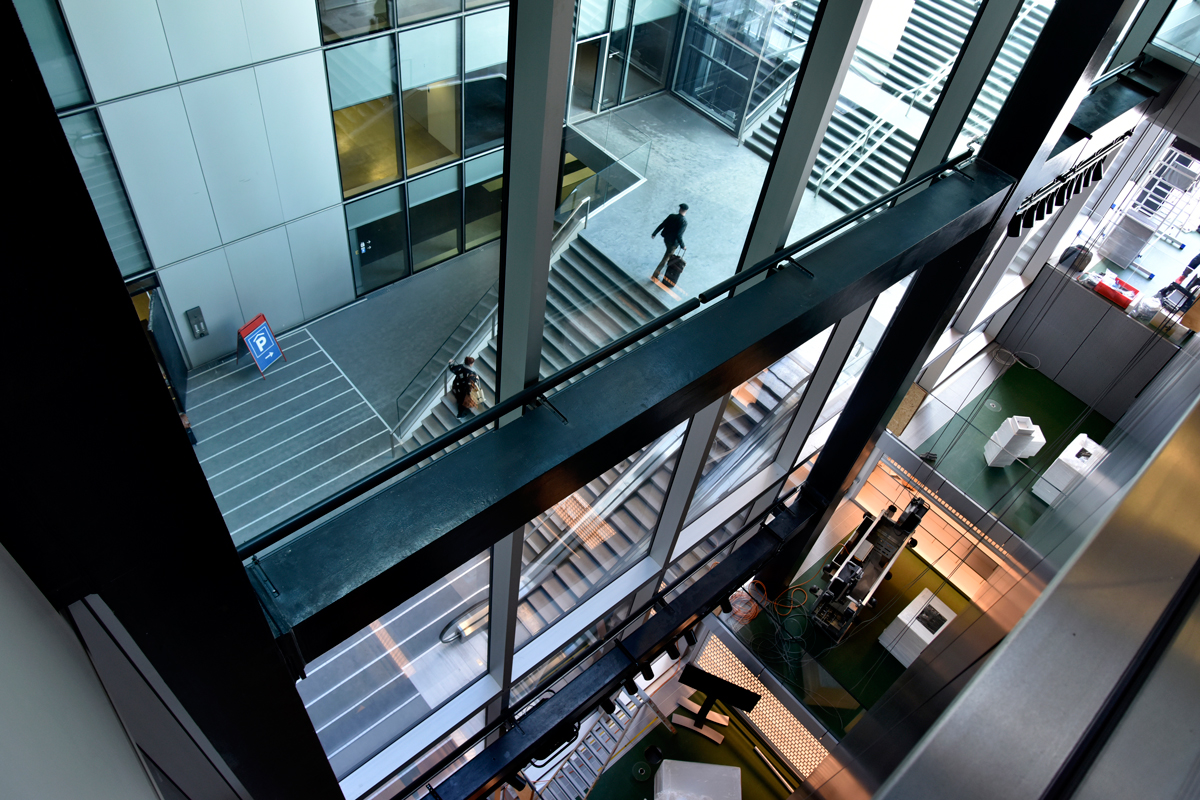
Not only will BLOX become a new riverside activity hub and landmark of Copenhagen and Denmark, but it will also serve as a great example of the development of unused land into a public space of great functional efficiency that can provide practical solutions for the city. The project is a manifestation of how architecture can successfully function as an important tool that contributes to the betterment of the people’s quality of life.
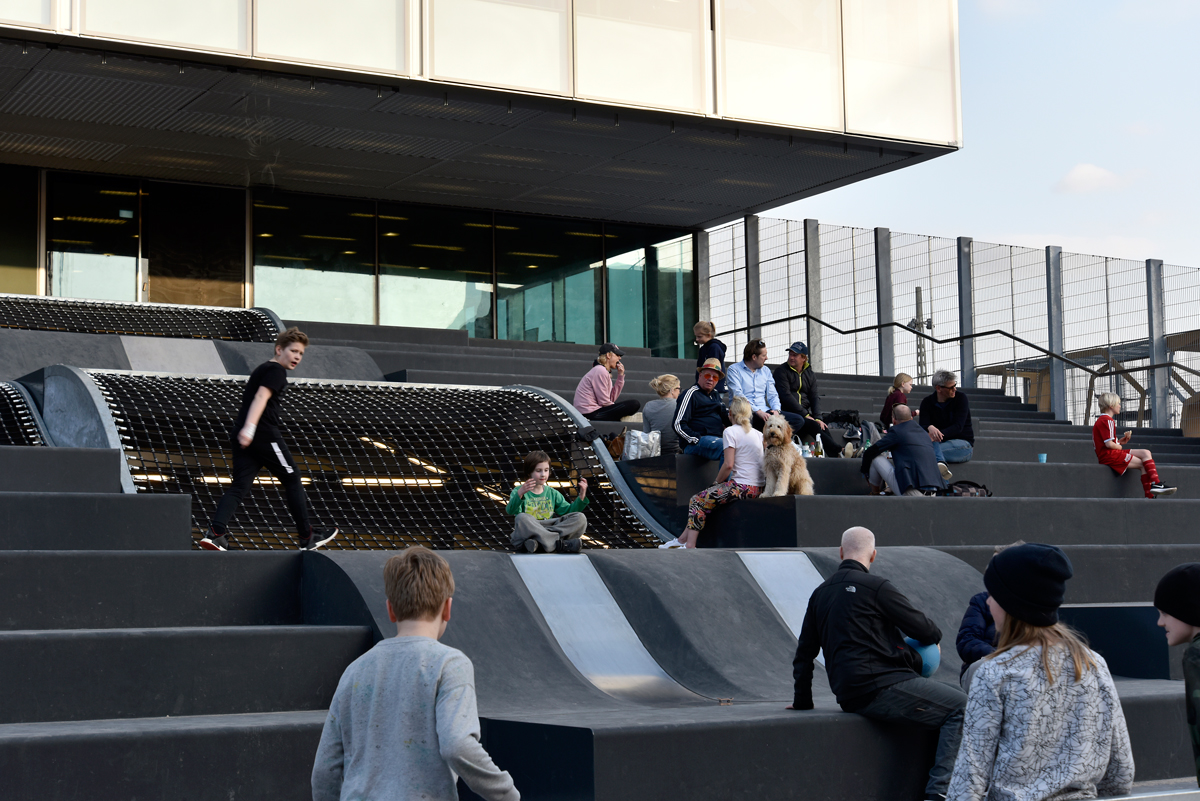

เมืองหลวงของประเทศเดนมาร์กอย่างโคเปนเฮเกน ถือเป็นอีกเมืองหนึ่งที่มีทำเลที่ตั้งอยู่ใกล้กับแหล่งน้ำธรรมชาติ และมีพื้นที่ริมน้ำที่มีคุณภาพเป็นจำนวนมาก โครงการพัฒนาพื้นที่ริมน้ำจึงถือเป็นส่วนหนึ่งของแผนพัฒนาเมืองโคเปนเฮเกนมาโดยตลอด โดยเฉพาะอย่างยิ่งการเพิ่มพื้นที่สาธารณะและพื้นที่กิจกรรมต่างๆ เพื่อกระตุ้นผู้คนให้ออกมาทำกิจกรรมริมน้ำกันมากขึ้น ซึ่งโครงการ BLOX ก็ถือเป็นอีกหนึ่งหมุดหมายสำคัญที่ถูกสร้างขึ้นเพื่อเป็นศูนย์กลางกิจกรรมริมน้ำแห่งใหม่ให้กับเมืองแห่งนี้
พื้นที่โครงการ BLOX ตั้งอยู่บริเวณริมอ่าวโคเปนเฮเกน ซึ่งเป็นย่านเมืองเก่าที่มีสถานที่สำคัญเป็นจำนวนมาก ทั้งพิพิธภัณฑ์แห่งชาติเดนมาร์กหอสมุดแห่งชาติเดนมาร์ก พระราชวัง หอศิลป์พิพิธภัณฑ์ และสถานที่ราชการสำคัญๆ อีกหลายแห่ง ซึ่งแต่เดิมพื้นที่ซึ่งเป็นที่ตั้งของ BLOX นั้นเคยเป็นโรงงานผลิตเบียร์เก่าที่ไม่ได้ใช้งานแล้วหลังจากโรงงานได้ถูกไฟไหม้ตั้งแต่ช่วงทศวรรษ 1960 ประกอบกับการมีถนนเลียบริมน้ำตัดผ่านทำให้พื้นที่แห่งนี้ถูกแยกออกเป็น 2 ฝั่ง พื้นที่ด้านในถูกตัดขาดการเชื่อมต่อกับริมน้ำ ทำให้ใช้งานได้ไม่เต็มประสิทธิภาพเท่าที่ควร โครงการพัฒนาพื้นที่ริมน้ำแห่งใหม่จึงเริ่มขึ้น โดยมี OMA บริษัทสถาปนิกจากเนเธอร์แลนด์ ได้รับมอบหมายให้เป็นผู้รับผิดชอบด้านการออกแบบให้กับโครงการ
BLOX ได้รับการออกแบบให้มีลักษณะเป็นอาคาร mixed-use ขนาดใหญ่ที่ผสมผสานพื้นที่ใช้สอยรูปแบบต่างๆ เข้ามาไว้ด้วยกัน ภายในพื้นที่ใช้สอยขนาด 28,000 ตารางเมตร ประกอบไปด้วยพื้นที่แสดงนิทรรศการ สำนักงาน co-working space ร้านอาหาร ร้านหนังสือ ฟิตเนสเซ็นเตอร์ อพาร์ตเมนต์ ที่จอดรถ รวมทั้งยังเป็นที่ตั้งของ Danish Architecture Center (DAC) ซึ่งเป็นศูนย์การเรียนรู้และหน่วยงานกลางของสถาปนิกเดนมาร์ก โดยนอกจากโครงการ BLOX จะสร้างขึ้นเพื่อตอบสนองด้านประโยชน์ใช้สอยในการเป็นศูนย์กลางกิจกรรมแห่งใหม่แล้ว เพื่อให้การพัฒนาพื้นที่นี้เกิดประสิทธิภาพสูงสุด ทางผู้ออกแบบจึงได้คำนึงถึงการสร้างความเชื่อมต่อระหว่างพื้นที่ริมน้ำกับพื้นที่ด้านในซึ่งได้ถูกตัดขาดโดยถนน โดยการออกแบบให้ตัวอาคารคร่อมอยู่บนถนนทั้งสองฝั่ง ในลักษณะที่เหมือนกับอาคารขนาดใหญ่ที่มีถนนผ่ากลางอาคาร ข้อดีของการจัดวางอาคารแบบนี้ คือมันช่วยให้ผู้คนจากบริเวณศูนย์ราชการและเมืองเก่าสามารถเข้าถึงพื้นที่ริมน้ำได้ง่ายขึ้นโดยมีอาคารเป็นตัวเชื่อมโยง ผ่านพื้นที่กิจกรรมที่มีความต่อเนื่องกันทั้งระดับเหนือดินและใต้ดิน
พื้นที่ใช้งานภายในอาคารแห่งนี้ แบ่งออกเป็น 8 ชั้น โดยเป็นชั้นบนดิน 6 ชั้น และชั้นใต้ดิน 2 ชั้น พื้นที่สำนักงาน พื้นที่จัดแสดงนิทรรศการ และพื้นที่ใช้สอยต่างๆ จะถูกจัดไว้บริเวณชั้น 1-4 และชั้นใต้ดินชั้นแรก ในส่วนของชั้นใต้ดินชั้นที่ 2 เป็นที่จอดรถอัตโนมัติ และบริเวณชั้น 5 และชั้น 6 ถูกจัดให้เป็นอพาร์ตเมนต์สำหรับพักอาศัย 22 หน่วย ในขณะที่บริเวณภายนอกอาคารได้รับการจัดให้เป็นพื้นที่สาธารณะขนาดใหญ่ที่เชื่อมโยงกับพื้นที่ภายในอาคาร สถาปนิกเลือกที่จะสร้างรูปลักษณ์ภายนอกของอาคารให้สัมพันธ์กับการใช้งานภายใน โดยเมื่อมองจากภายนอกตัวอาคารมีลักษณะคล้ายกับการนำกล่องหลายๆ กล่องมาวางซ้อนกันเป็นชั้นๆ ทำให้เกิดการซ้อนทับที่มีมิติและมีจังหวะที่หลากหลาย สะท้อนถึงการใช้งานภายในที่เกิดขึ้นมาจากการนำพื้นที่ใช้งานที่หลากหลายมาประกอบเข้าไว้ด้วยกัน โดยทั้งหมดนี้ถูกเล่าผ่านภาษาสถาปัตยกรรมที่เรียบง่ายและตรงไปตรงมา เน้นการใช้เส้นตรงและมุมฉากรวมทั้งใช้วัสดุอย่าง คอนกรีต เหล็ก และกระจกเป็นองค์ประกอบหลักของอาคาร นอกจากนี้ สถาปนิกยังให้ความสำคัญกับการใช้พลังงานอย่างประหยัด และคำนึงถึงการปล่อยคาร์บอนออกสู่สิ่งแวดล้อมให้น้อยที่สุด ด้วยการเลือกใช้วัสดุที่ได้รับการรับรองมาตรฐานด้านการประหยัดพลังงาน เช่น ผนังกระจกกันความร้อน และนำแสงธรรมชาติเข้ามาใช้ภายในอาคารเพื่อลดการใช้ไฟฟ้าภายใน เป็นต้น
นอกจาก BLOX จะกลายเป็นศูนย์กลางกิจกรรมริมน้ำและเป็นหน้าเป็นตาใหม่ให้กับเมืองโคเปนเฮเกนและประเทศเดนมาร์กแล้ว โครงการนี้ยังเป็นตัวอย่างที่ดีของการพัฒนาพื้นที่ไร้ประโยชน์ในเมืองให้มีการใช้งานที่เต็มประสิทธิภาพมากยิ่งขึ้น รวมทั้งคำนึงถึงการแก้ปัญหาต่างๆ ให้กับเมือง ซึ่งนี่ถือเป็นโครงการตัวอย่างที่ดีที่ช่วยยกระดับส่งเสริมคุณภาพชีวิตของผู้คนในเมืองให้ดียิ่งขึ้น โดยมีสถาปัตยกรรมเป็นเครื่องมือสำคัญ
TEXT: JAKSIN NOYRAIPHOOM
COURTESY PHOTO OF OMA
oma.eu

